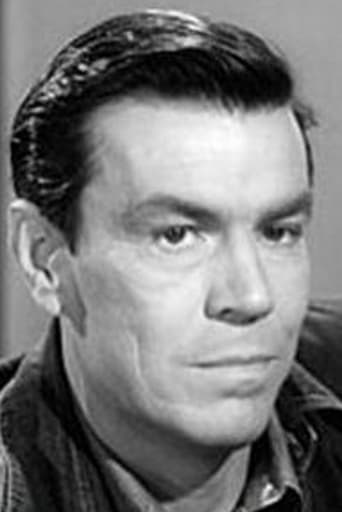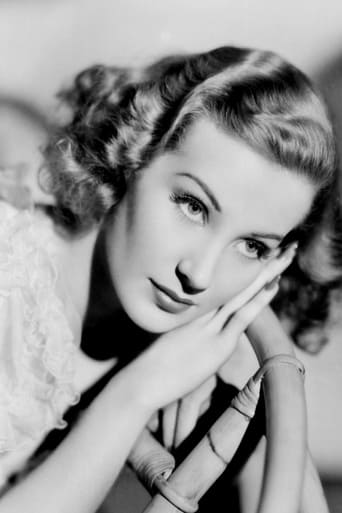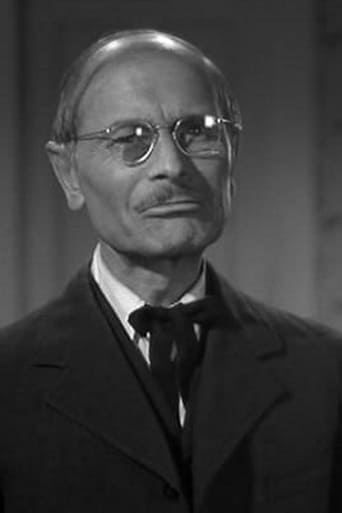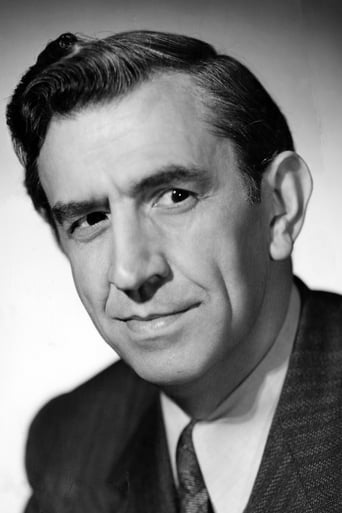ThedevilChoose
When a movie has you begging for it to end not even half way through it's pure crap. We've all seen this movie and this characters millions of times, nothing new in it. Don't waste your time.
Grimossfer
Clever and entertaining enough to recommend even to members of the 1%
Quiet Muffin
This movie tries so hard to be funny, yet it falls flat every time. Just another example of recycled ideas repackaged with women in an attempt to appeal to a certain audience.
Cristal
The movie really just wants to entertain people.
JohnHowardReid
Producer: Dale Van Every. Copyright 12 April 1940 by Paramount Pictures Inc. (Credit titles give copyright year as 1939). New York opening at the Paramount: 10 April 1940. U.S. release: 12 April 1940. Australian release: 3 April 1941 (sic). 8 reels. 6,906 feet. 77 minutes.SYNOPSIS: "What you are doing is mad. It is diabolical. You are tampering with powers... reserved... to God." — Paul Fix.COMMENT: A cult classic science fiction piece with Albert Dekker in his most memorable role as the mad scientist. The faultless special effects stand up well (despite their primitive methodology) to today's computer generation. Of course a more sophisticated modern audience will probably find the dialogue and situations pretty risible. They will think themselves superior not only to the film but to the audiences who originally enjoyed it, not realizing that 1940's picture-goers found Dr. Cyclops pretty much of a hoot too. But it's not the dialogue and the direction that matters, nor even the acting. It's the special effects. They're great. And it's all fast-paced with plenty of action and cliffhanger thrills. Imaginative color photography and an atmospheric music score smooth over Schoedsack's inclined-to-be-static camera set-ups. True, this is no King Kong, but Mr. Schoedsack knows his monsters well enough to shoot home another box-office winner here. Oddly, despite this success, it was nine years before he made another film, his last, "Mighty Joe Young".OTHER VIEWS: Known as the most fearless director in the world, Ernest B. Schoedsack tackles neither real nor imaginary wild animals in "Dr. Cyclops" but a monster in human form. In this thinly disguised anti-fascist tract, Schoedsack casts Albert Dekker as an almost blind and eventually one-eyed Hitler whose lust for power over his own universe causes him to use science to destroy rather than create, to maim rather than heal. He ruthlessly annihilates outspoken opposition and regards his now leaderless subject peoples as playthings and toys, and finally as enemies that must be destroyed. Dekker's impression in the title role has given him such lasting fame, we tend to overlook the good work contributed by the rest of the players, particularly Charles Halton in one of his biggest and most successful roles as the will-not-be-bullied Bulfinch. Heroine Janice Logan (this is the last of the only three films I have for her) is an attractive lass, and we enjoyed Thomas Coley (this seems to be his only movie appearance) as the reluctant hero.The film has been realized on an enormous budget with marvelous effects and technical wizardry. The duplicate sets — one normal- sized, the other gigantic-sized — are all perfectly matched. The process work is impeccable. — JHR writing as George Addison.
AaronCapenBanner
Albert Dekker stars as Dr. Alexander Thorkel, an obsessed scientist in Peru who encounters four explorers who have come to see him. They are disturbed by the direction his experiments are taking, which involve radium, so in order to get them out of the way, he shrinks them to one-fifth their normal size with an invention of his, placing them in a life or death struggle to restore their normal size, and stop the mad Dr. Thorkel. Filmed in color, Albert Dekker delivers a strong performance, but all the other characters are too bland and poorly characterized to become involved with their plight, and film as a result just isn't believable or compelling.
gavin6942
A mad scientist working in the South American jungle (Albert Dekker) miniaturizes his colleagues when he feels his megalomania is threatened.When I watched this I did not find it too terribly interesting, almost more of a hokey comedy with science fiction elements. But I did not realize it was from 1940. To have a film in 1940 shot in Technicolor is interesting enough, but then to be a film about shrinking people...Science fiction of the 1950s loved shrinking people and growing animals. But this film beat them all. Was it the first? I have no idea. But it mixes comedy with camera work, and also color... and even a hint of Greek mythology to boot. Viewed in the proper context, this is quite the film.
John W Chance
How many science fiction films were made in color before 1940? Unless we include 'color tinted' films from the silent era, the answer is ONE -- the recently released two-strip version of 'Dr. X' (1932). 'Dr. Cyclops' is an 'A' list SF film, it's in gorgeous Technicolor, and has state of the art special effects. It is highly recommended for those three reasons.Dr. Thorkel (Albert Dekker) has been using radium extracted from a rich underground vein to miniaturize animals. We see the shrinking room and machine (the 'condenser'), the deep welled vein and a strange looking extracting device-- and the green glow of them in operation, all nicely done. He invites three scientists to confirm some mysterious part of his work, and then after their having done so, dismisses them the same day. Outraged, they stick around, until finally Dr. Thorkel locks them in the shrinking room and miniaturizes them. They spend the rest of the film escaping and then trying to kill him.I first saw this in black and white on TV over 40 years ago, when few programs were shown in color. I didn't know it was filmed in color! While the movie had a great premise and effects, I was a little underwhelmed by the acting, and it didn't seem particularly exciting. Watching it today, it still has those weaknesses. Though Albert Dekker does a fine villainous job, as do Charles Halton (Rupert Bulfinch*), veteran of 186 bit parts in movies and TV, and Victor Kilian (Steve) with 139 to his credit, the rest of the small cast is flat, colorless, and uninteresting. (Paul Fix does get one great scene at the beginning.)The pacing is fine and the shrunken heroes are placed in a number of perilous situations. My 8 and 10 year old grandchildren were transfixed during those parts. You do enjoy watching the entire film; you just wish that Janice Logan, Thomas Colley, and Frank Yaconelli could have had a wider range of facial expressions and acting skills as well as better and richer dialog.Charles Halton had a long career playing professors, judges, lawyers and other 'stiff' types; Victor Kilian can be seen as the (uncredited) professor leading a crew inside the Earth in 'Unknown World' (1951), and as a featured player in the great TV 'soap' 'Mary Hartman, Mary Hartman' (1976-1977).The film has great Technicolor photography, matte shots, with mostly sharp rear projection that makes it seem as if the 13 inch shrunken humans are actually in the same room with Dr. Thorkel. We get the heroes filmed in giant sets, something done in other films such as the fantastic 'The Incredible Shrinking Man' (1957) with Grant William's great tortured face.We have to be grateful for large favors. The amazing Technicolor and effects place this one up high. Some less than scary music (for example, flighty flutes and staccato violins during running sequences) and 'B' list actors in an 'A' level production reduce my score down to a 6 and a half.* This presumably is a little joke reference to 'Bulfinch's Mythology' the standard work of the time on ancient mythology that included the story of Ulysses and Cyclops.





